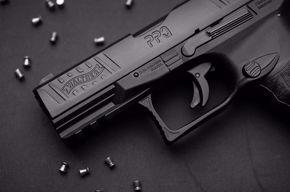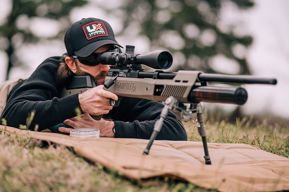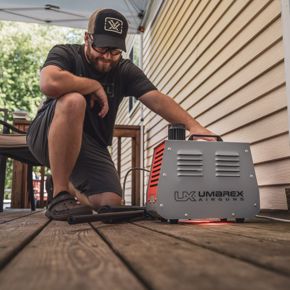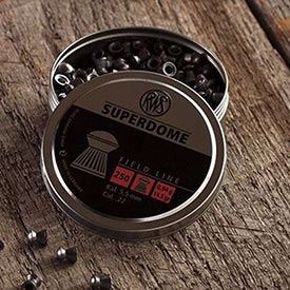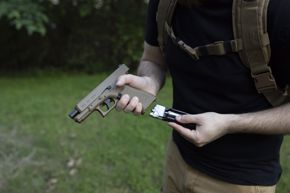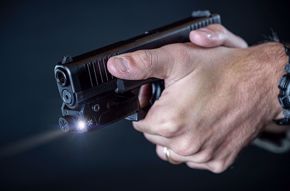The new 9mm Beretta APX is among the handguns that were considered as a replacement for the Beretta M9 as the U.S. Army’s standard issue sidearm. The gun finally chosen in the Modular Handgun System competition was the Sig Sauer P320 (other finalists were Glock and FN USA). As has been the case with military handgun trials in the past, the guns that are not selected by the military end up entering the civilian market as the latest advances in handgun design. Many of those also appear soon after as CO2 powered blowback action air pistols. The new Umarex Beretta APX is the latest example.
The Umarex Beretta APX
In order to compete in the Modular Handgun System competition, the gun’s construction had to reconfigurable for multiple uses (one of many requirements) and the APX was developed by Beretta with a separate fire control and trigger housing that could be moved from one frame to another. Beretta first introduced this concept with the 9mm Nano in 2011 and .380 ACP Pico in 2013, so the design parameters were not unfamiliar to the oldest armsmaker in the world. In producing a CO2 version of the APX that part of the design was not carried forward to the airgun, nor were the interchangeable backstrap panels, however, the general lines of the APX CO2 model and its “major” operating controls have been duplicated. Since the airgun is not designed to be disassembled it does not have a functioning take down lever, so this piece is molded into the frame for visual accuracy; the blade safety trigger from the APX is also not used on the airgun and an additional mandatory sliding manual safety has been mounted on the right side of the frame where the takedown lever’s crown would be. The safety can be easily operated by the trigger finger. The CO2 model has fixed white dot sights (that look like the fully adjustable high definition sights on the APX), a locking slide and left side only functioning slide release (the slide release is ambidextrous on the cartridge models), correct style magazine release, grip contours, surface texturing on the backstrap and frontstrap, and aggressive full length slide serrations. The weight and balance have also been closely approximated to make the APX CO2 model a suitable training aid for familiarization with the new striker-fired cartridge models.
One of the requirements for the 9mm and .40 S&W APX semi-autos was a trigger design that would provide a consistent trigger pull and quick reset. Although the CO2 version does not use a blade safety trigger, its shape is closely duplicated for the DAO design with a trigger pull resistance of 6 pounds, 4.5 ounces, vs. 6 pounds even for the centerfire model. Unfortunately, the airgun’s trigger requires a full release to reset.
Another design aspect of the Umarex model was the decision to use a separate CO2 chamber and 20-shot stick-type BB magazine with a full-size APX base plate. This decision was based on the airgun’s retail price point, which is under $70. Even so, it still offers blowback action, and manages to use a polymer frame with integrated MIL STD 1913 Picatinny accessory rail, a metal slide, and duplicate the cartridge model’s low bore axis to reduce felt recoil. While felt recoil is not relevant to the CO2 model, the low bore axis of the APX design also improves accuracy, and that’s relevant to any handgun, no matter what the caliber.
From the start, Beretta designed the APX for military and law enforcement use and built a straightforward “fighting handgun” for quick deployment and action in the field. The CO2 model makes training for that end user a very affordable and practical process, as well as offering airgun enthusiasts a new CO2 model that is right up to the minute for contemporary design. The cartridge-firing APX models were introduced in the U.S. this year concurrent with the CO2 version from Umarex.
While the centerfire APX models use a tilting barrel, locked-breech design, the CO2 model uses a fixed barrel and straight blowback action operating system (some more costly CO2 semiautomatics duplicate the locked breech tilting barrel designs of their centerfire counterparts). Standard magazine capacity for the 9mm model is 17+1 while the air pistol can load up to 20 steel BBs. For practical training purposes, the APX CO2 model can be loaded to duplicate the 18-round total for a 9mm.
Like the recently introduced Sig Sauer P320 CO2 model, the Beretta APX is a minimalist design that provides only the most essential operating features for training and accurate handling of its centerfire counterpart. With all of the correct Beretta markings and logos, (and having the warning information discretely printed on the underside of the triggerguard) the Beretta licensed Umarex APX comes off looking nearly identical to the 9mm model with standard black polymer frame and black nitrating finished slide. It comes in at a price that makes the CO2 model an almost essential training aid.
For Beretta, the APX semi-auto was its third groundbreaking polymer-framed handgun (along with the Pico and Nano) completing the company’s pistol portfolio making Beretta one of a handful of manufacturers to offer full-size polymer and metallic-framed handguns in both hammer and striker-fired operating systems. Carrying that design into the Umarex Beretta APX is actually more of an achievement since the APX is Beretta’s first full-size 9mm striker-fired model, and with the CO2 version being introduced at almost the same time it presents an opportunity to get a hands-on feel for the new centerfire model for the price of a few boxes of 9mm tactical ammo.
While the Umarex APX is an air pistol first, and a potential training gun second, it is very accurate in design even though the APX air pistol does not have all of the cartridge model’s working features. As a surrogate for the new polymer-framed Beretta, you can still glean the fundamentals of the APX, how it fits the hand, draws, aims, and get a decent approximation of trigger pull, and do it for $500 less than the price of the new 9mm or 40 S&W Beretta models.
Sizing up the CO2 and 9mm models
The 9mm APX has an overall length of 7.55 inches, barrel length of 4.25 inches, a height of 5.6 inches, width of 1.3 inches, and carry weight of 26.8 ounces (empty). The CO2 models specs out with an overall length of 7.38 inches, a barrel length (internal) of 3.5 inches, a height of 5.5 inches, width of 1.3 inches and carry weight (empty) of 24.5 ounces. All very close to the 9mm model’s specifications. Trigger pull on the airgun is 6 pounds, 4.5 ounces, vs. an even 6 pounds average for the 9mm, so initial trigger pull is very close to the actual gun for training. What it lacks is the short reset of the blade safety trigger on the centerfire model.
The key points of interest on the CO2 version are the matching slide serrations (although slide resistance is very light), white dot sights, grip angle and grip texturing, all of which match the cartridge-firing models. The same applies to the shape and operation of the magazine release, which requires a firm push to drop the 20-shot .177 caliber mag. The full-size APX base plate adds to the accurate feel of the magazine when you load the gun, and the accessory rail allows mounting the same lights and laser sighting devises used on the cartridge-firing guns. While about 2.3 ounces lighter than the centerfire pistol, the overall feel of this airgun, balance in the hand and matching low bore axis make it an ideal training aid, as well as a very affordable and realistic handling CO2 blowback action air pistol. And remember we’re talking about a correctly designed Beretta model with high detail Beretta grip logos and factory markings, even a recessed individual fire control housing serial number, for an investment of less than $70, making this one of the most affordable of any blowback action model available. I might be so bold as to call it an “entry level” blowback action model but far more realistic in appearance and far more accurate with .177 caliber steel BBs than many guns costing up to $25 more. Bottom line here, this is a hot ticket item for beginners and seasoned airgun shooters alike who want the latest semi-auto designs.
Steel shots downrange
The Umarex Beretta APX is factory rated at 395 fps. With six rounds run through the traps on the ProChrono chronograph, the APX averaged 380 fps with Umarex .177 caliber steel BBs. The high velocity ranged from 397 fps to 389 fps, to a low of 362 fps. With its low bore axis design, the CO2 model shares the same benefits with sighting since the bore of the barrel is more closely aligned with the top of the hand. With a cartridge gun, this also changes recoil dynamics which become more linear (straight back over the top of the hand in line with the muzzle of the gun) and thus feel proportionately lighter. A high bore axis places the sights further above the top of the hand and allows more felt recoil.
While recoil is not an issue with a blowback action CO2 pistol, the practical benefit is better sighting. With the APX CO2 model’s firm, evenly stacking trigger and its clean break, it is easy to keep the gun on target. Ease of reset with full let off of trigger slows you down but accuracy at 21 feet with the non-adjustable sights still delivers satisfactory results. Fired in two six round sets, total spread for 12 shots measured 1.7 inches in the 10 and X with a best 5-rounds grouped inside the red dot X at 0.625 inches. Using the Crimson Trace Rail Master green laser the APX delivered a near duplicate 0.625-inch group of five rounds, which further underscores the consistent accuracy of this blowback action air pistol at 21 feet.
However you stack it up; for price, basic operating features including blowback action, a slide that locks back on an empty magazine, ease of handling and consistent accuracy, the new Umarex Beretta APX is more than the sum of its parts or its MSRP suggests.
By Dennis Adler

